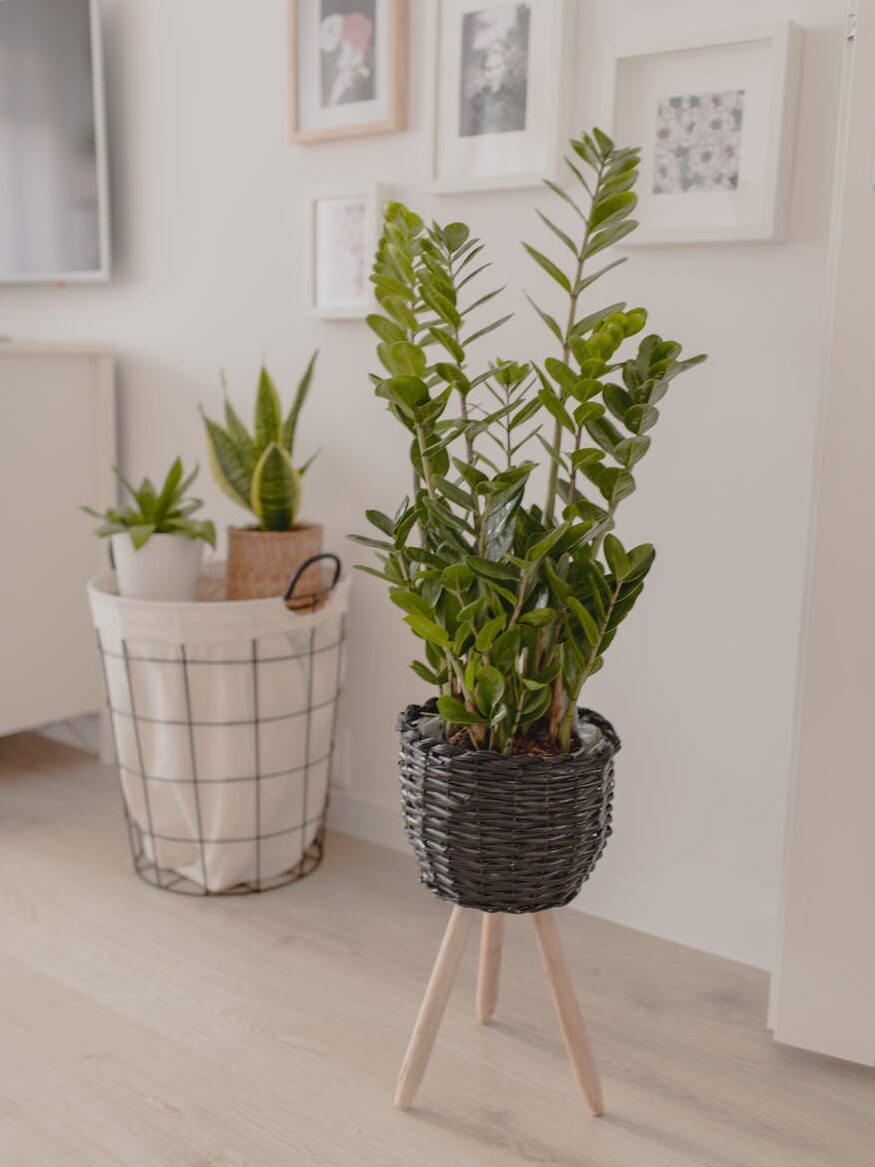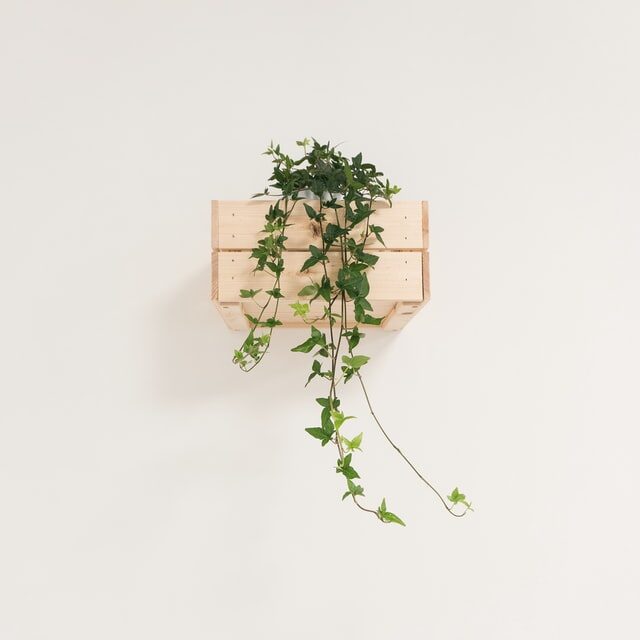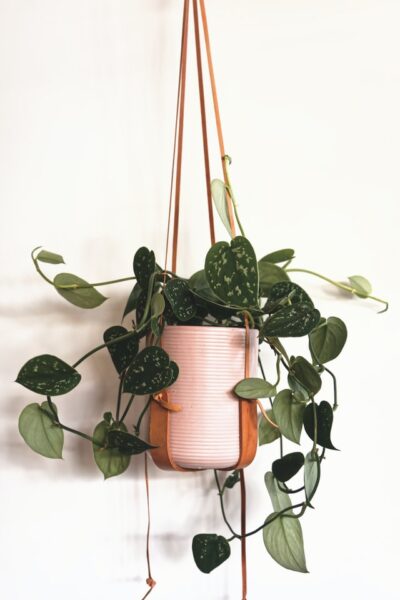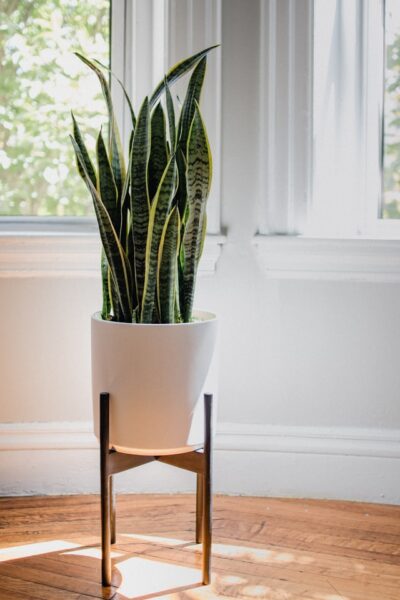6 Plants That Remove Toxins From Your Home
Plants are a great way to bring life into your home. Even better, indoor plants clean the air and remove toxins. Below you will learn about six different plants that are both aesthetically pleasing and remove multiple toxins from the air in your home. Most plants remove toxins, so do some research on the plants you already have or ones you want, and get plants that cover a range of different toxins for your home. Everyone should be able to find a plant below that matches their style and care abilities.
#1: Snake Plant (Dracaena Trifasciata)
It took me over a year to get a snake plant for myself as I thought they weren’t aesthetically pleasing. After owning one, I have changed my mind and now they are one of my favorite plants. Not only do I like the way they look, but they are also the easiest plant to care for and remove so many toxins from the air. They remove formaldehyde (building materials, cleaning products and fireplaces), trichloroethylene (metal products, adhesives, paint and stain removers), benzene (paint strippers, candles, and carpets), xylene (varnish, permanent markers, and dyes), and toluene (spray paints, floor polish, bath mats and wood sealers).
These plants can survive in tough conditions and do not need a lot of light or water. Therefore, I water my snake plant once a month as they like their roots to be dry.
- Light: indirect sun (they can adapt to high sun or low light)
- Soil: cactus or well draining soil
- Water: water monthly or twice a month if light watering (always better to underwater vs overwater!!)
- Toxins Removed: formaldehyde, trichloroethylene, benzene, xylene, and toluene
#2: ZZ Plant (Zanzibar Gem)

Another great choice is the ZZ plant, as it withstands many conditions and removes lots of toxins from the air. These plants are aesthetically pleasing to most people and match any home décor. I even have a small one on my desk to clean the air I am in for 8+ hours a day. One caveat about this plant is that it can be mildly toxic if consumed, resulting in uncomfortable, itching symptoms. So, if you have small children or pets that like to nibble on your plants, keep this one out of reach! That being said, don’t let it scare you away as I have had a few over the years and have touched them often and have never had any symptoms.
The ZZ Plant removes xylene (gasoline, paint, and perfumes), toluene(primers, cement and carpet), and benzene (glues, adhesives, and cleaning products). Just like the Snake Plant, these plants are drought tolerant and do not need a lot of light or water. For example, I water mine once a month as they like their roots to be dry.
- Light: indirect sun (they can adapt to high sun or low light)
- Soil: cactus or well draining soil
- Water: water monthly or twice a month if light watering (always better to underwater vs overwater!!)
- Toxins Removed: xylene, toluene, and benzene
#3: English Ivy (Hedera Helix)

When I think of ivy, I picture century old castles with ivy growing up its walls. One of the things I love about ivy is the versatility of placing it around your home. You can have it sitting on a bookshelf with the leaves cascading down, or hanging from the ceiling over a little nook. These long-lasting plants enjoy full sun but can also survive in shade. They not only remove formaldehyde and benzene from the air, but they also combat mold in your home as well! These plants are also great if you want to learn how to propagate (make new baby plants). You simply cut one of the vines, place it in water until enough roots grow, then replant it!
- Light: bright sun to low light
- Soil: potting soil
- Water: water once to twice a week and make sure the pot has drainage holes. You will know when it is time to water again once the top inch of the soil is dry.
- Toxins Removed: benzene, formaldehyde and mold
#4: Pothos (Epipremnum Aureum)

Another vine plant that is great at removing toxins is the pothos. It cleans the air from benzene (candles, glues and cleaning products), formaldehyde(furniture and appliances), toluene (paint thinner, house cleaners, and nail polishes), xylene (insecticides, perfumes, and rust preventers) and trichloroethylene (carpet cleaners and wood finishes). In addition, the pothos also removes carbon monoxide, so if you have a fear of carbon monoxide in your home, this is the plant for you! However, it does not remove it fast enough if there was a leak in your home, but it does remove trace amounts.
- Light: bright sun to partial shade
- Soil: potting soil
- Water: water once a week and make sure the pot has drainage holes. You will learn how often your plant needs water, as the leaves begin drooping when it needs to be watered.
- Toxins Removed: benzene, formaldehyde, toluene, xylene, trichloroethylene and carbon monoxide
#5 Flamingo Lily (Anthurium)

The Flamingo Lily will add color to any space. This flowering plant has a waxy red flower that can bloom year-round with proper care. The Flamingo Lily will add a tropical look to any space. Being a tropical plant, the Flamingo Lily prefers a humid home and will benefit from being misted regularly. This plant cleans the air of ammonia (cleaning products), toluene (stain removers, pens and markers), xylene (paint, dyes and perfumes), and formaldehyde (appliances and furniture).
- Light: bright, indirect sunlight
- Soil: acidic, well draining potting mix
- Water: twice a week in the summer months, once a week in the winter months. Wait until the top inch on the soil is dry to water.
- Toxins Removed: ammonia, toluene, xylene, and formaldehyde
#6: Broadleaf Lady Palm (Rhapis Excelsa)

Nothing says tropical warm weather like a palm tree does. The Broadleaf Lady Palm is small enough to fit in any room of your house. The perfect placement for this plant is your bathroom as they love humidity. The broadleaf lady palm removes ammonia from the air, most likely found in bathroom and window cleaning products. Similarly, ammonia can be found in other places of the home like furniture polish, oven cleaners, and floor waxes.
- Light: shade (leaves with be dark green) to indirect light (lighter leaves)
- Soil: whatever soil or potting mix you have on hand
- Water: Twice per week but can survive in short periods of no watering, so these plants will be alive when you come home from a two week vacation.
- Toxins Removed: Ammonia
Adding indoor plants that remove toxins to your collection
Adding plants to your home not only increases the aesthetic, but also removes harmful toxins that are found in every home. There is a long list of indoor plants that clean the air and remove toxins, so as long as you have plants that combined remove all of the toxins listed above. Once you have the plants, spread them throughout your home for optimal clean air. For example, you could place the Snake Plant in your bedroom, the ZZ Plant in your office, the English Ivy plant in the kitchen, a Pothos sitting on top of a bookshelf in your living room, the Broadleaf Lady Palm in your bathroom and the Flamingo Lily in your entryway. Let me know what plant you plan on adding to your home!
Hi, my name is Cara! My personal journey with cancer and weight loss has led me to developing a passion for helping others with nutrition, fitness, and self care.
